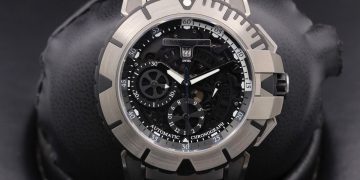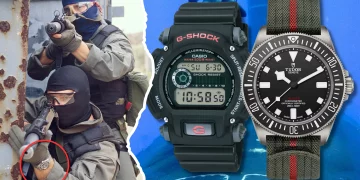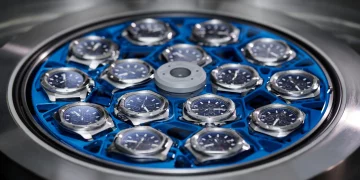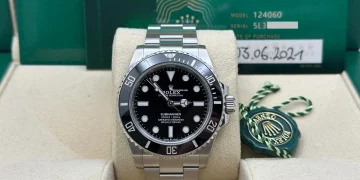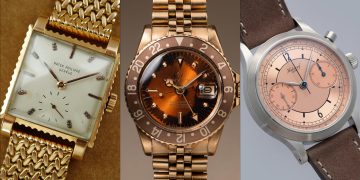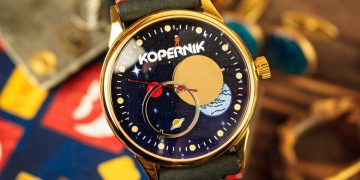In the layered world of luxury watches, few models straddle history, rebellion, and meme culture as deftly as the Cartier Crash. Once a surrealist icon tucked away in vintage collector circles, the Crash exploded into mainstream consciousness in 2024—not through the usual auction house fanfare, but on the wrist of a tattooed rapper wearing Balenciaga cargos.
The moment Cartier dropped a limited reissue of the Crash last year, chaos followed. Streetwear blogs called it “the Dali of dials,” while TikTok users stitched slow-motion closeups of its melted form with booming trap beats. What was once a quiet emblem of subversive design became the centerpiece of a streetwear-meets-haute-horlogerie movement.
But why now? Why this watch? And for investors, how do you tell whether you’re holding a cultural time bomb or just a hype-fueled dud? Let’s unpack the cultural mash-up, the real story behind the design, and what to watch for in a Crash market frothing with confusion.
Subcultural Fusion: Rappers and Custom “Shattered Dials” Ignite a Trend
The Crash didn’t re-emerge in 2024 as a polite homage to Cartier’s archives. It re-entered public consciousness like a grenade thrown into the intersection of fashion and music. The fuse? A series of custom versions flaunted by major hip-hop artists, featuring “fractured” dials that looked like someone had stomped on a Cartier face with designer sneakers.
Atlanta-based rapper K$AW, known for turning Goyard bags into skate decks, posted a photo of himself wearing a “Crash XL” model iced out with asymmetric diamonds and jagged enamel inserts. His caption? “Bent time, real flex.” The post clocked 3.7 million likes within hours, and Cartier’s limited drops were instantly cleared out from retailers and VIP waitlists.
Suddenly, the distorted elegance of the Crash was no longer an esoteric nod to postmodern design—it was a flex, a symbol of curated chaos.
The appeal was clear:
- Individuality through asymmetry: In an era where streetwear craves the imperfect and handmade, the warped, melted shape of the Crash dial felt authentic and raw.
- Customizability: Jewelers and underground artisans began crafting their own interpretations, using laser-split sapphire or resin-filled cracks to exaggerate the original warping.
- Cultural license: Unlike classic Patek or Audemars, the Crash didn’t carry the same “rules.” There was no right way to wear it—upside-down, on chains, or next to a rubber wristband.
This freedom fit perfectly into the Gen Z luxury aesthetic—where tradition is only respected if it can be deconstructed.
Archival Mystery: The 1967 Original Was Allegedly a Post-Car Wreck Accident
Part of the mystique behind the Cartier Crash lies in its murky origin story—one that Cartier itself has sometimes sidestepped in official branding, but which collectors whisper about with the reverence of urban legend.
The most enduring tale begins in 1967, at Cartier London. A client reportedly brought in a Cartier Baignoire Allongée watch that had been warped in a brutal car accident. The heat and pressure had misshaped the case, glass, and dial. Instead of discarding the wrecked piece, one of Cartier’s designers saw beauty in the melted chaos. They sketched a new design based on the “crashed” aesthetic and re-engineered the internals to match the new silhouette.
Was it an act of surrealist brilliance or simply an improvised salvage job? That’s the intrigue. Regardless of the truth, the Crash debuted not as a gimmick, but as a bold rejection of conventional form—its slanted Roman numerals, collapsed ellipse case, and off-centered crown speaking volumes in silence.

The 2024 reissue channels that same energy but with sharper marketing. Cartier emphasized exclusivity, offered regional variants, and courted high-fashion influencers who eagerly embraced the warped geometry. The campaign leaned into the lore, referencing Salvador Dalí without naming him, and leaving enough ambiguity to fuel Reddit threads and unboxing reactions for months.
Investment Warning: How to Tell a Hype Model from a True Scarce Edition
Now that the Crash has been absorbed into pop culture, it risks becoming the next bubble. Watch flippers and novice investors are piling in, often without knowing how to distinguish between real scarcity and Instagram bait. So how do you protect yourself?
1. Understand Production Origins
The original Crash watches from Cartier London between 1967 and 1977 are museum-grade rarities. They were produced in tiny batches, often by hand, and differ from Paris or New York reissues in case curvature, numeral thickness, and lug execution. These watches fetch six to seven figures not just for rarity, but for historical DNA.
The 2024 reissue, though beautiful and technically complex, was released in controlled but traceable quantities. Some were reserved for VIP clients, others for flagship boutiques. These models are clearly labeled and numbered.
2. Analyze Movement and Case Back
Vintage Crashes feature movements like the caliber 841 or Jaeger-based modules, usually manually wound. The reissue versions often carry modern calibers like the 1917MC, and the finishing, while excellent, lacks the hand-engraving seen on earlier pieces.
Look for hallmarks, movement stamps, and especially the caseback inscriptions—older versions may lack the same serial formatting, and many were engraved at the request of individual buyers.
3. Beware of Over-Customization
Heavily modified Crashes—especially those altered by jewelers for celebrity clients—lose value in the eyes of serious collectors. While these pieces generate social media buzz, they deviate from Cartier’s archival vision, and future resale becomes a gamble.
A Crash watch with aftermarket diamonds or a cracked-glass dial may attract likes, but it won’t hold against auction scrutiny.
4. Avoid FOMO Auctions
Watch platforms are currently flooded with “Crash-inspired” models that are neither officially licensed nor properly sourced. Many of these sell for inflated prices due to temporary hype. If provenance is unclear, or if the watch is missing box and papers, walk away—hype fades faster than metal tarnishes.
Conclusion
The 2024 Cartier Crash reissue hit the watch world like a meteor—not because of a new movement or groundbreaking material, but because it collided head-on with fashion, music, and the search for meaning in imperfection. For a generation raised on algorithmic perfection and filtered reality, the bent, broken elegance of the Crash offered something real. Something human.
And while that popularity has generated a flood of custom interpretations and investor speculation, the essence of the Crash remains rooted in chaos turned beautiful. For those who wear it sincerely, it’s more than a timepiece—it’s a personal glitch in the matrix, worn proudly on the wrist.
But for those looking to collect, caution is the name of the game. Learn the watch. Learn the story. And remember: sometimes, the most valuable thing about the Crash isn’t its resale price—it’s the moment it reminds you that not everything perfect is worth keeping straight.



